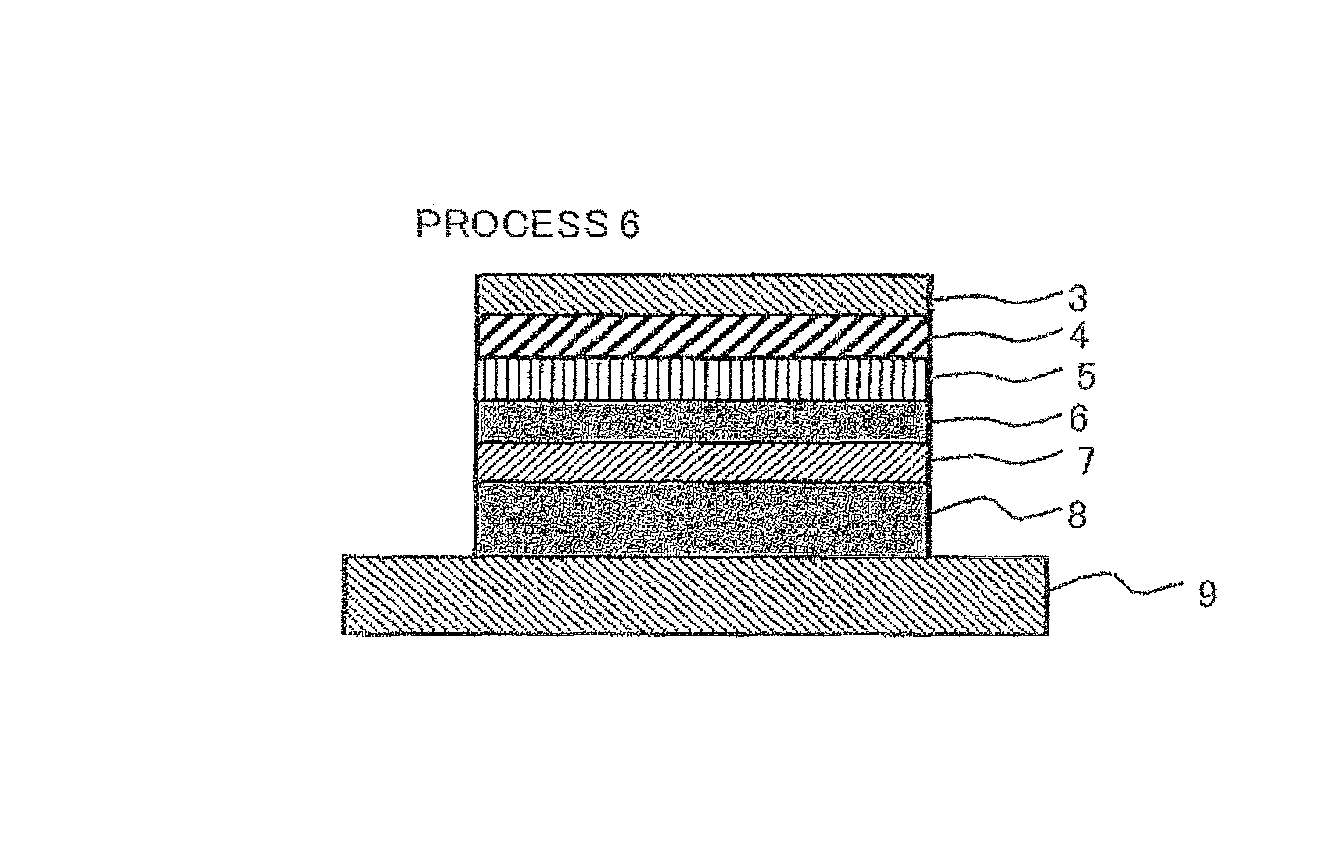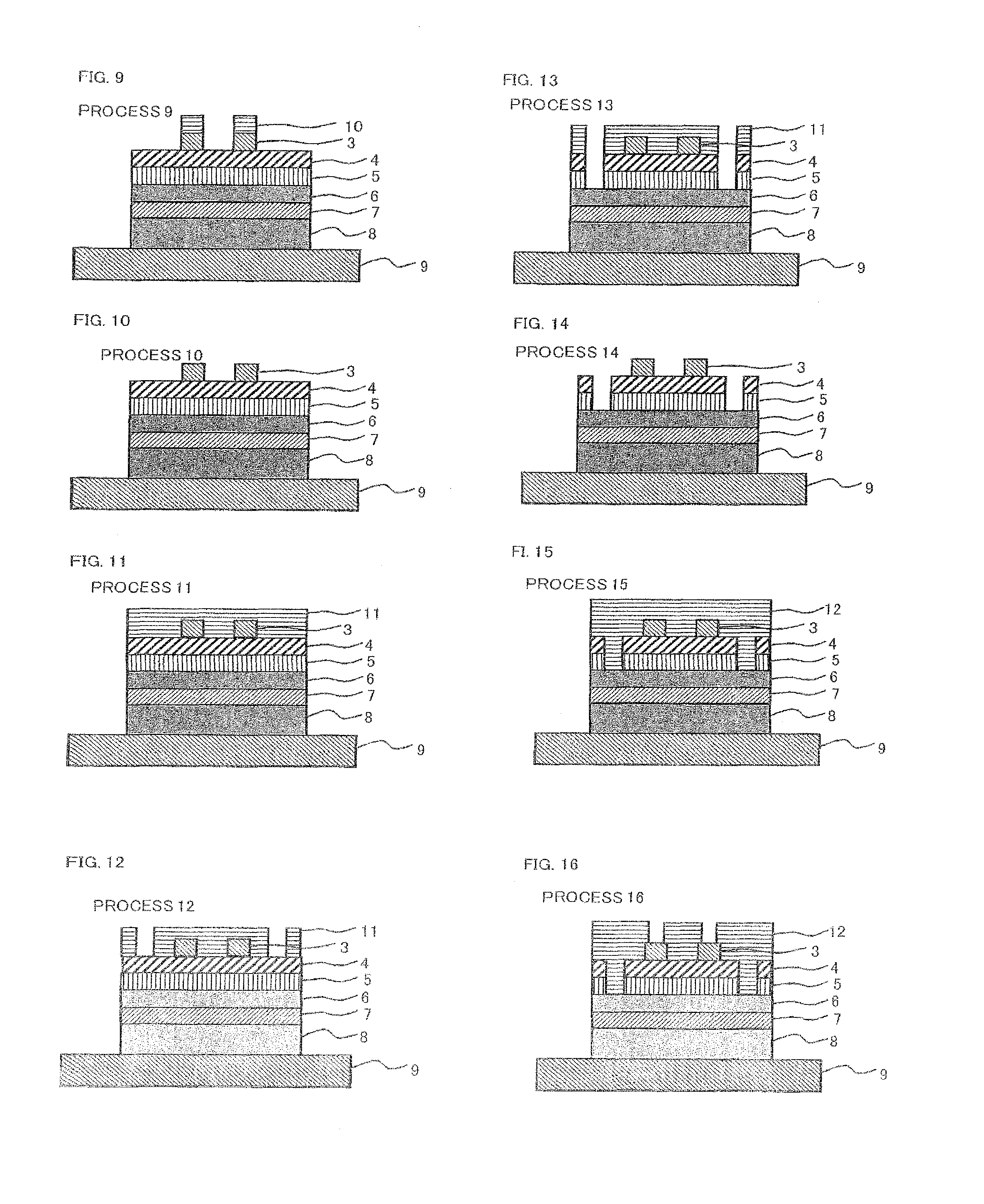Method for manufacturing thin film compound solar cell
a solar cell and compound technology, applied in the field of manufacturing a thin film compound solar cell, can solve the problems of corroding metallic ribbons, hydrofluoric acid, separation of rear surface electrodes from compound semiconductor layers, etc., and achieve the effect of improving the adhesive property of each electrode and reducing contact resistan
- Summary
- Abstract
- Description
- Claims
- Application Information
AI Technical Summary
Benefits of technology
Problems solved by technology
Method used
Image
Examples
Embodiment Construction
[0077]A thin film compound solar cell according to the present embodiment has a structure including: a cell main body in which at least one PN junction is formed by laminating a plurality of compound semiconductor layers, each having a different chemical composition; a surface electrode which is formed on the light receiving surface of the cell main body; a rear surface electrode which is formed on the opposite surface of the cell main body; and a base material for the thin film solar cell. The base material is formed on the opposite surface of the cell main body, and the rear surface electrode is sandwiched between the cell main body and the base material.
[0078]A method for manufacturing the solar cell having this structure will be described. In process 1 shown in FIG. 1, a compound semiconductor layer made of single crystal thin films is formed by laminating, on a substrate 1, an etching-stop layer 2 for suppressing infiltration of an etching solution from the side of the substrat...
PUM
| Property | Measurement | Unit |
|---|---|---|
| thickness | aaaaa | aaaaa |
| temperature | aaaaa | aaaaa |
| temperature | aaaaa | aaaaa |
Abstract
Description
Claims
Application Information
 Login to View More
Login to View More - R&D
- Intellectual Property
- Life Sciences
- Materials
- Tech Scout
- Unparalleled Data Quality
- Higher Quality Content
- 60% Fewer Hallucinations
Browse by: Latest US Patents, China's latest patents, Technical Efficacy Thesaurus, Application Domain, Technology Topic, Popular Technical Reports.
© 2025 PatSnap. All rights reserved.Legal|Privacy policy|Modern Slavery Act Transparency Statement|Sitemap|About US| Contact US: help@patsnap.com



